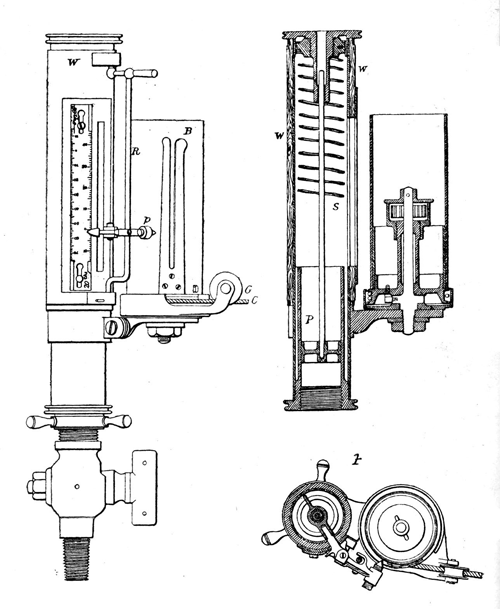
 |
Apart from the recording system, the McNaught essentially similar to Watt's reciprocating-tablet instrument, with a steam-tight piston P sliding in a wood-insulated tube W beneath a spiral spring S, which was capable of extension or compression. A pencil-pointer attached to the piston tail rod p — pivoting on a bar R protruded through the wall of the tube W to trace a diagram on a paper strip held to the drum B by brass fingers. The drum contained a coil spring or fusée, which was anchored in the drum spindle and worked against a spindle fixed in the supporting bracket or platform. When the outward stroke of the engine began, a cord C running back from the parallel motion, crosshead or suitable movable point, passed over a pulley G attached to the drum-support bracket. This rotated the drum as the increase in steam pressure in the cylinder raised the pencil to begin the trace. As the inward stroke began, the spring rotated the drum back to its starting position as the cylinder pressure dropped. The return stroke thus completed the diagram.